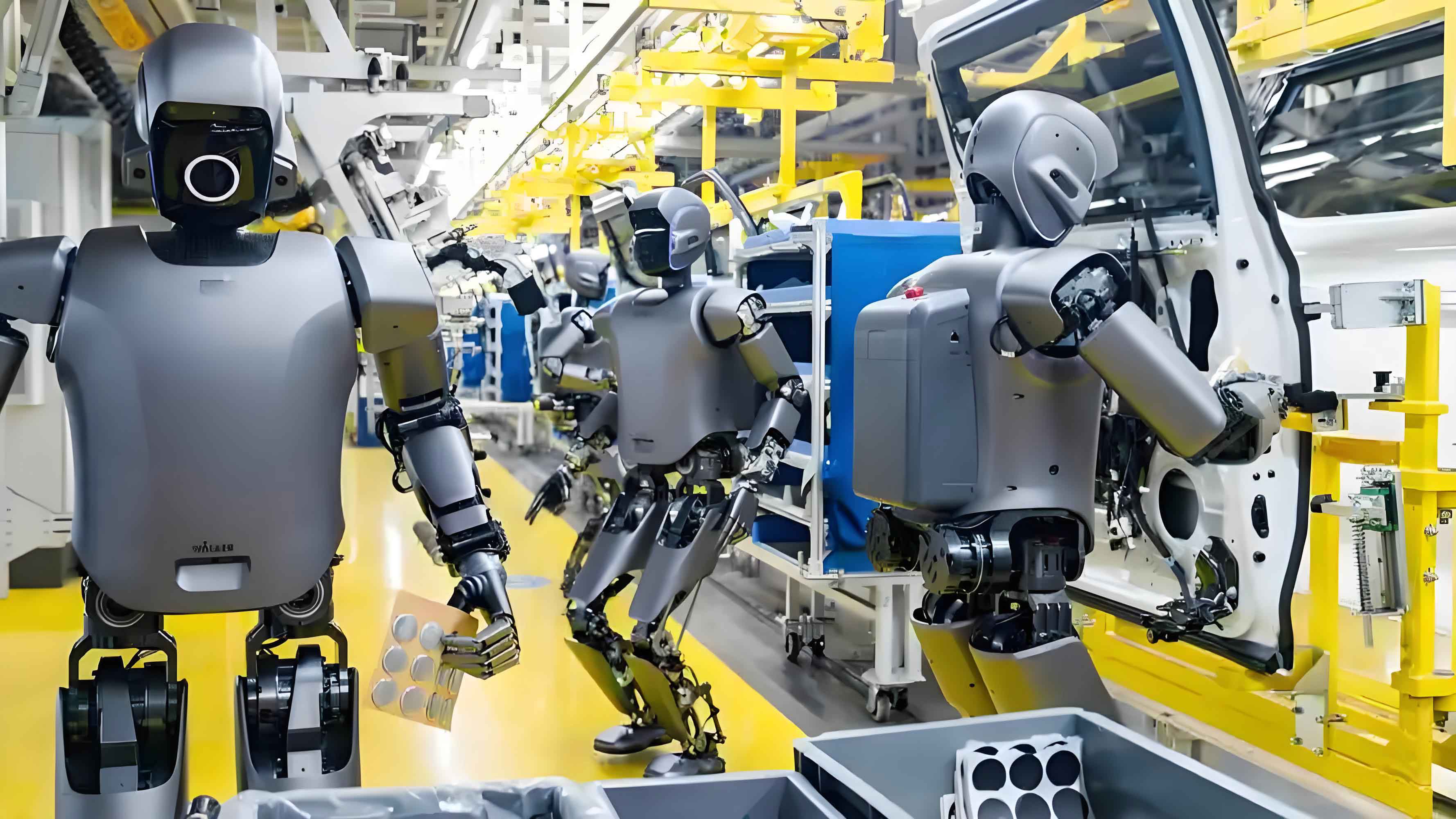Amid national discussions on new productive forces during the Two Sessions, Guangdong’s robotics sector has captured significant attention. The province now manufactures four out of every ten industrial robots in China, solidifying its position as the country’s largest intelligent robotics industry cluster. This prominence is exemplified by the emergence of Guangdong’s “Seven Swordsmen” – leading robotics enterprises including Midea Kuka, Ubtech, Huashu Robot, Inovance Technology, Dobot, Topstar, and Jaten Robot. Notably, Foshan hosts two of these industry pioneers: Midea Kuka and Huashu Robot, representing distinct yet complementary approaches to advancing China’s robotics capabilities.

Midea Kuka: The Industrial Robotics Powerhouse
Midea Kuka, born from Midea Group’s acquisition of global robotics leader KUKA in 2017, has established itself as a cornerstone of China’s industrial automation landscape. The Midea Kuka Smart Manufacturing Industrial Park in Beijiao, Shunde, now stands as China’s largest industrial robotics production base, with cumulative deliveries exceeding 80,000 units. Zhong Zheng, Vice President and CFO of Midea Group, emphasizes the company’s strategy of leveraging global technology with local innovation: “After acquiring KUKA, we prioritized developing localized solutions for China’s vast market while addressing core challenges in heavy-duty industrial robotics.” This fusion of international expertise and domestic market understanding has proven highly effective, with the robotics and automation division exceeding 30 billion yuan in revenue in 2024. Midea Kuka dominates the heavy-load industrial robot segment with a remarkable 41.5% market share. Recent technological breakthroughs include the development of a prototype 500kg heavy-duty robot, achieving revolutionary improvements in single-axis stiffness and repeat positioning accuracy – key indicators demonstrating China robot manufacturing advancements.
Huashu Robot: The Domestic Innovation Trailblazer
As a national leader in indigenous robotics technology, Huashu Robot has pioneered differentiated competitive strategies since establishing its primary R&D and manufacturing base in Shishan, Nanhai in 2015. The company has developed over 50 industrial robot models across six series, including the groundbreaking BR dual-rotation robots. This innovative design reduces traditional six-axis robots’ blind zones by 80% while increasing product yield to 99.5%, earning the 2023 Guangdong Provincial Science and Technology Progress Award. Zhang Jianjian, General Manager of Huashu Robot’s South China Marketing Center, attributes this success to substantial R&D investment: “Our 100+ member R&D team has achieved over 90% localization in core components like controllers and servo drives.” With the recent operational launch of the Nanhai Intelligent Robot Science Park, Huashu Robot’s annual production capacity has reached 20,000 units, serving critical sectors including 3C electronics, home appliances, and new energy vehicles. The company anticipates 30% year-on-year revenue growth in Q1 2025, fueled by increasing demand within China’s robot market.
Strategic Expansion in China Robot Ecosystem
The growth trajectories of both enterprises reflect broader provincial initiatives strengthening China’s robotics capabilities. Guangdong’s recently introduced 12-point policy package specifically supports AI and robotics industry advancement. Zhang Jianjian notes: “Artificial intelligence enables more intelligent decision-making in robotics. These policies provide tangible benefits for China robot manufacturers.” Huashu Robot is currently focusing on vision-driven control integration systems to accelerate domestic substitution, while Midea Kuka continues vertical integration in heavy-payload robotics. Foshan’s unique position as China’s sole manufacturing transformation pilot city creates an ideal ecosystem, hosting trillion-yuan industrial clusters in home appliances, automotive, and equipment manufacturing that generate billions in annual robotics application demand. The city has developed a comprehensive industrial chain encompassing core components, robot bodies, and system integration – positioning itself at the forefront of China robot industry evolution.
Comparative Impact of Foshan’s Robotics Leaders
| Company | Core Technology Focus | Market Position | Production Capacity | Key Innovation |
|---|---|---|---|---|
| Midea Kuka | Heavy-payload industrial robotics | 41.5% market share in heavy-load segment | Largest industrial robot production base in China | 500kg heavy-duty robot prototype development |
| Huashu Robot | Localized core components & specialized robots | Leader in dual-rotation robotics | 20,000 units/year after 2024 expansion | 80% blind zone reduction in BR series robots |
Future Trajectory of China Robot Industry
Industry analysts highlight several key trends shaping Guangdong’s robotics landscape:
- Localization Acceleration: Both companies exemplify the dual-path strategy in China robot development – integrating global technologies while advancing domestic innovation to achieve over 90% core component independence.
- AI Integration: Provincial policies explicitly support intelligentization upgrades, with Huashu Robot developing vision-control systems and Midea Kuka enhancing decision-making algorithms.
- Application Diversification: Emerging opportunities in new energy vehicles and advanced electronics are driving specialization within China robot manufacturing.
- Capacity Expansion: Major production base developments like Nanhai Intelligent Robot Science Park demonstrate scaled infrastructure investment in China robot ecosystem.
As Guangdong solidifies its leadership in China robot production, the complementary strengths of Foshan’s two robotics champions – Midea Kuka’s global integration and Huashu Robot’s indigenous innovation – create a powerful synergy. This dual-engine approach positions the Pearl River Delta at the forefront of intelligent manufacturing, with continuous breakthroughs in core technologies strengthening China robot capabilities globally. The provincial cluster’s development offers a replicable model for high-end manufacturing transformation nationwide, demonstrating how strategic integration of international expertise and domestic R&D can accelerate technological sovereignty in critical industrial sectors.
